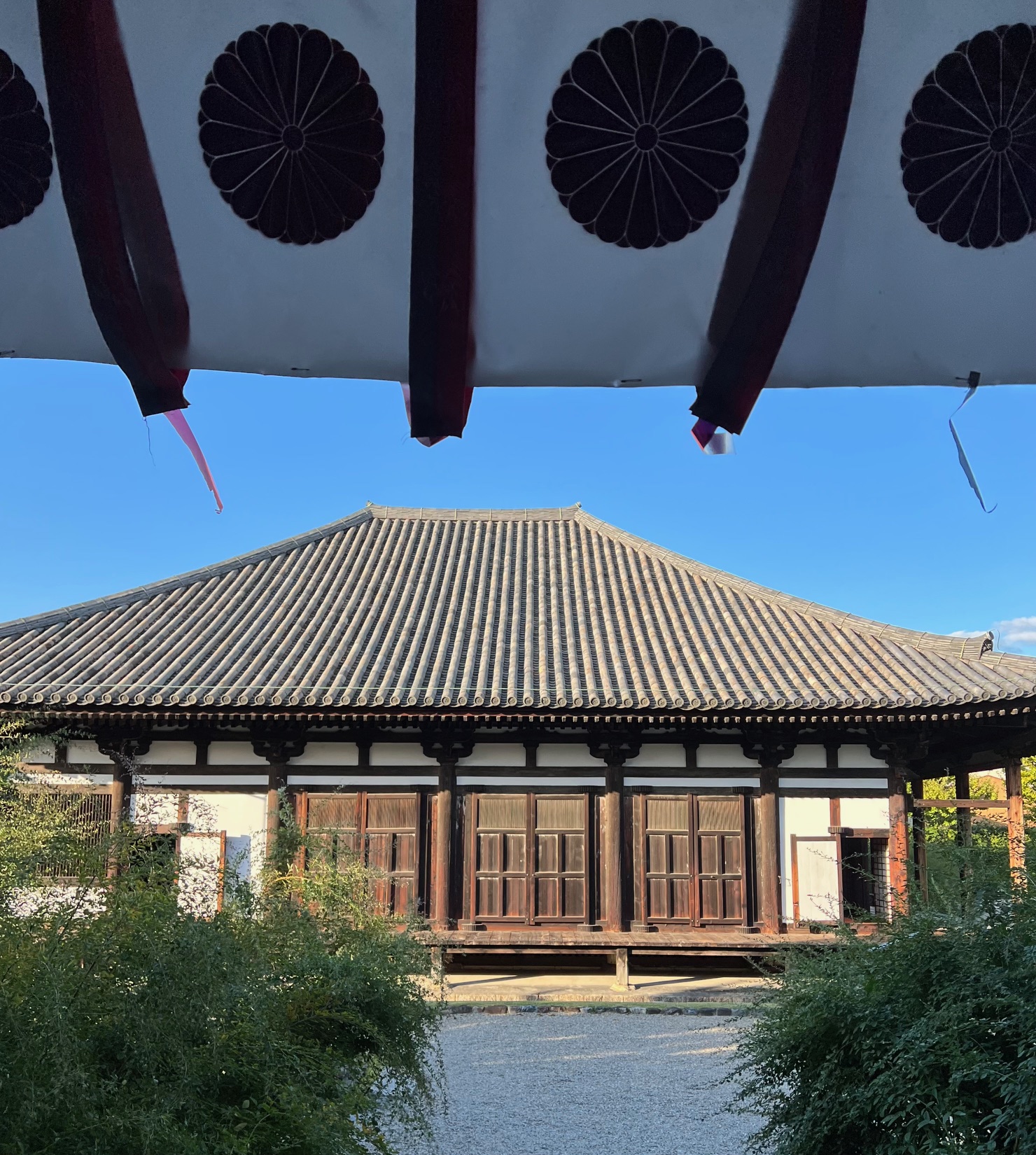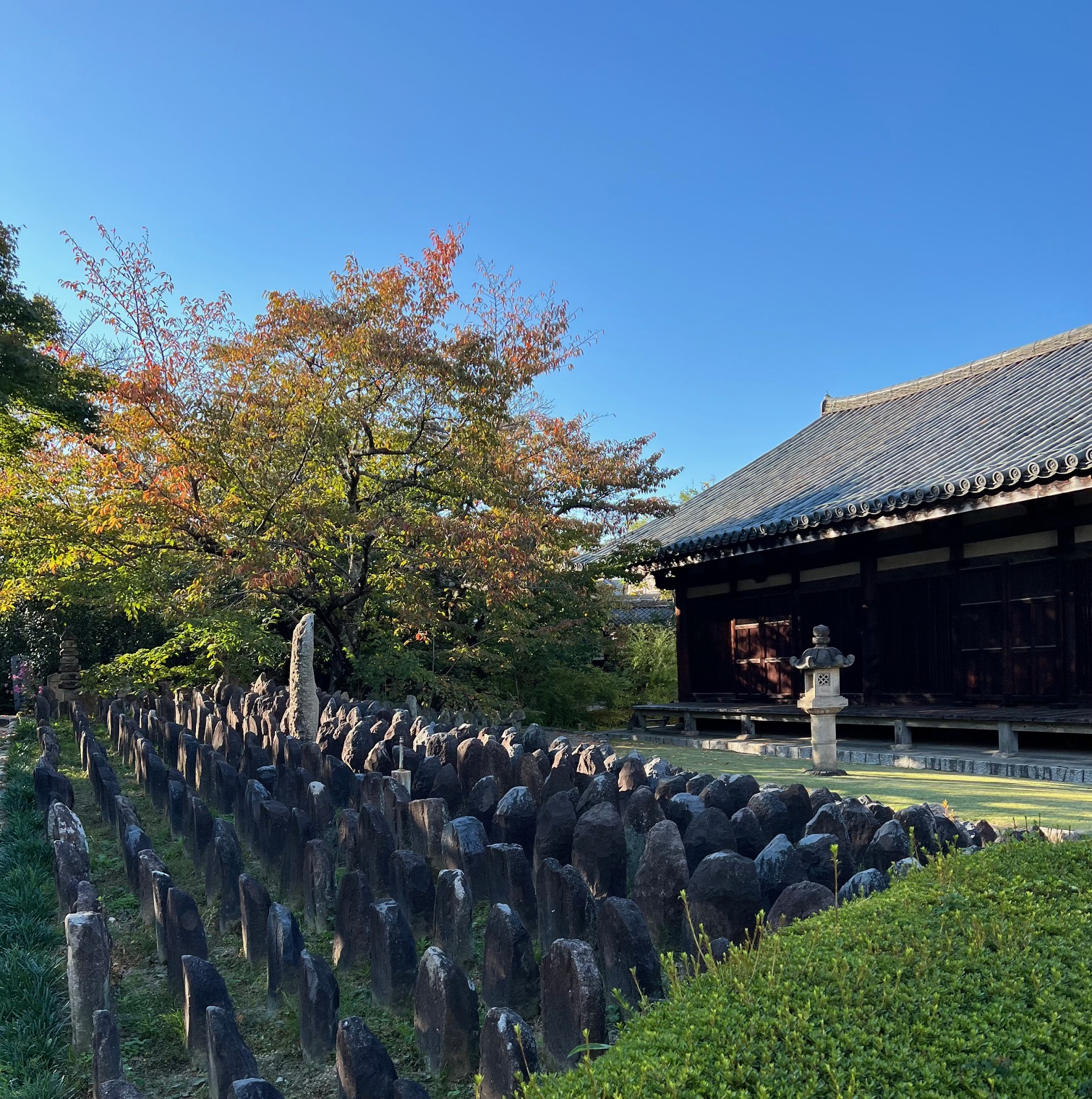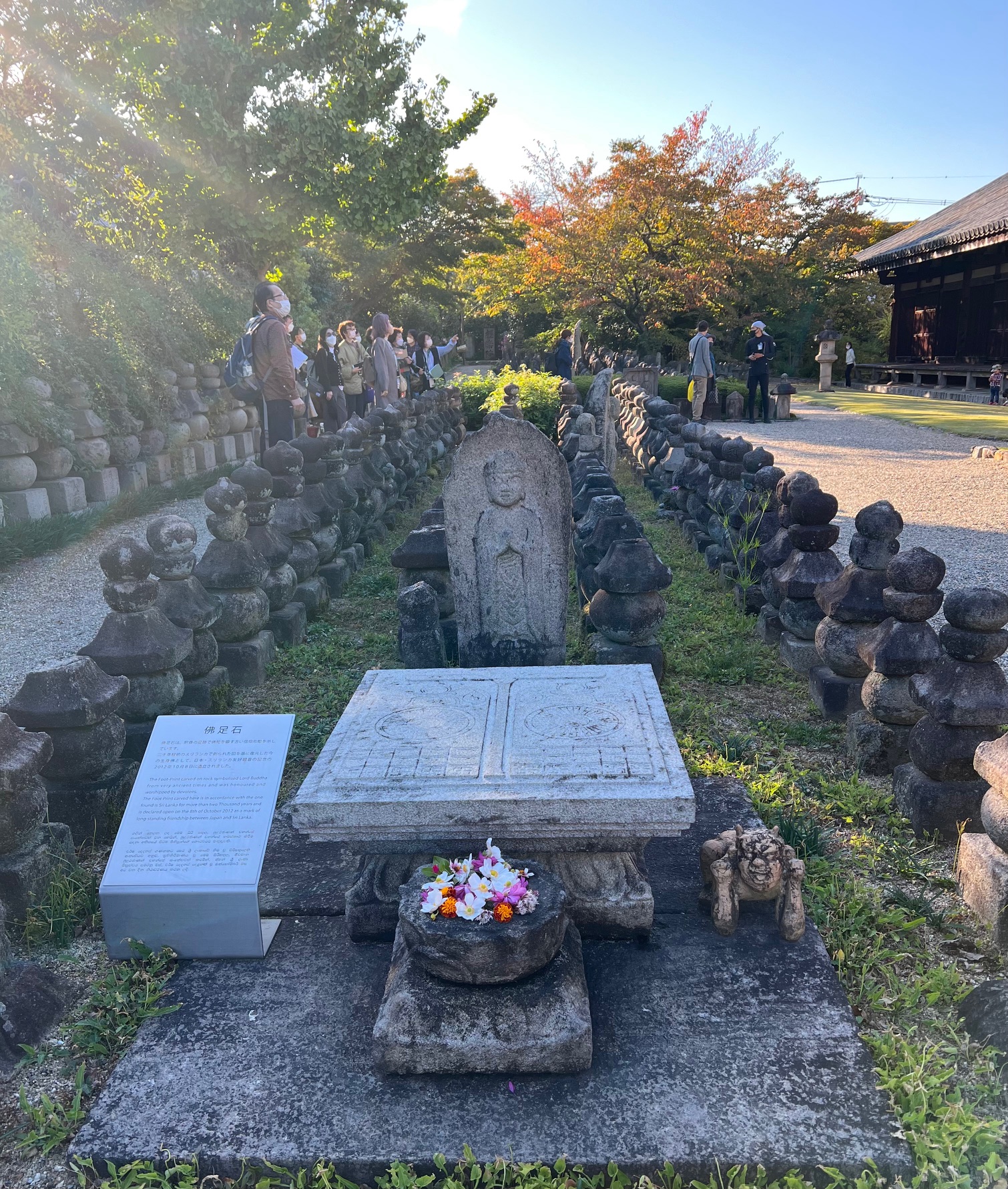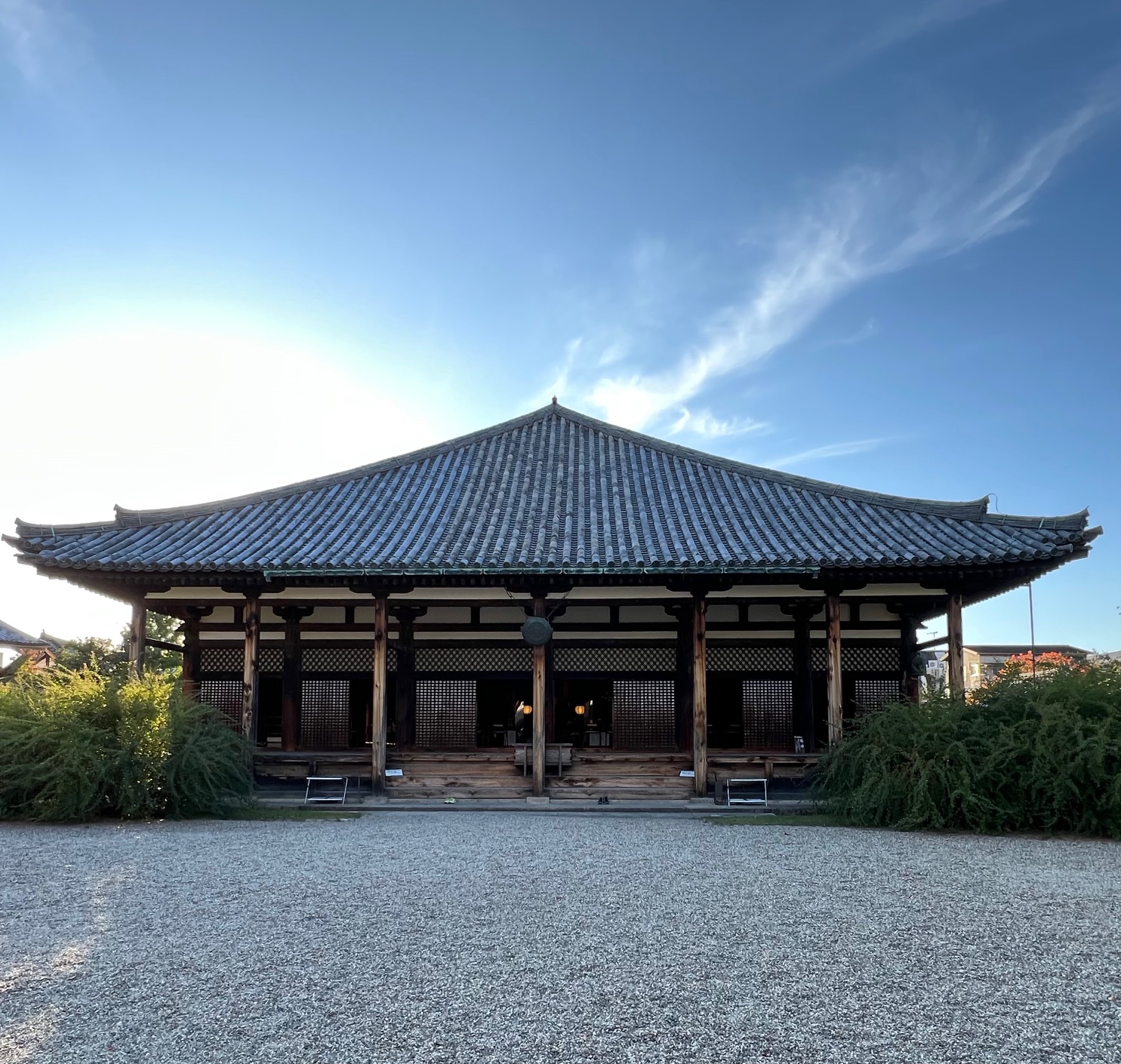Even on a hot summer day, a cool breeze flows through the Gokurakubo Hall of Gango-ji Temple. Every time I visit, I want to sit here and meditate to feel as if I am transported back to the Tenpyo era. The dimly lit hall, with its black-glossed pillars, ceiling, and floorboards, brings a sense of peace. In contrast, the bright blue sky, white sand, and green shade outside create a vivid scene, making time feel like it stands still.
Gango-ji Temple is located deep within Naramachi, a popular tourist area. Finding the entrance can be a bit tricky due to the narrow and winding streets. It takes about a 15-minute walk from Kintetsu Nara Station, and the area is dotted with small, old shops, making it a delightful place to explore.

Access
From Kintetsu Nara Station, walk straight through Higashimuki Shopping Street until you reach Naramachi Oodori Street. Turn left towards Wakakusayama, and you will see a sign for Gango-ji Temple across the street. Entering Naramachi from there, you will find the temple easily. From JR Nara Station, it takes about 20 minutes on foot, heading straight east along Naramachi Oodori Street.
History
Gango-ji Temple originated as Asukadera (or Hoko-ji), built in the 6th century by Soga no Umako, a leader of a ruling clan in Asuka. It was Japan’s first Buddhist temple, built with the help of many monks, scholars, and craftsmen from Baekje (Kudara) and other countries. The temple played a significant role in the cultural exchange between continental and Japanese cultures. When the capital moved to Heijokyo in 718, Gango-ji was relocated there, leaving part of Asukadera behind. During the Nara period, the temple complex was vast, covering the area of present-day Naramachi. It fell into decline when the capital moved to Heiankyo in Kyoto (in 794), and around the time of the Meiji Restoration(mid 19th century), but was gradually restored to its current state by the efforts of the chief priest Tsujimura Taien from 1943 onwards.

Temple Ground
Upon entering, you will see the National Treasure Gokurakubo (Main Hall) directly in front of you. The hall, set against the backdrop of a clear sky and white gravel, retains its original Tenpyo-era appearance. Uniquely, five pillars stand at the front of the hall, seemingly blocking the entrance. The roof tiles of Gokurakubo and the Zen Hall behind it are the oldest in Japan, dating back to the temple’s founding. Observing these tiles feels like traveling back 1400 years.
Inside Gokurakubo, the central altar area is surrounded by wooden flooring, with tatami mats around it, allowing for circumambulation by monks chanting sutras. The hall is cool and dark, with a strikingly bright view outside. Stepping out onto the surrounding veranda offers a close view of the Tenpyo-era tiled roof. The Zen Hall, also a National Treasure, can only be viewed from the outside, with its slightly brownish ancient tiles being a highlight. Some of the materials used in the Zen Hall date back to the mid-6th century, possibly making it older than Horyu-ji Temple.
Opposite Gokurakubo and the Zen Hall, across the stone Buddha group and numerous five-storied pagodas, is the Horinkan, which houses the National Treasure Five-storied Small Pagoda, commissioned by Empress Komyo. This detailed replica is displayed indoors for viewing. Another Five-storied Small Pagoda can be found at Kairyuo-ji Temple, which also has deep connections with Empress Komyo.
Gango-ji Temple is a serene and historical site, offering a unique glimpse into Japan’s ancient Buddhist culture and architecture, making it a must-visit for tourists in Nara.

Buddha
木造彫眼 阿弥陀如来像(重要文化財) 平安時代
Other Treasures
東門 (重要文化財)
極楽坊 (国宝)
禅堂 (国宝)
五重小塔(国宝)
寄木造玉眼 聖徳太子立像(重要文化財)
木造玉眼(重要文化財)
Flowers
春:桜、つつじ
夏:芙蓉、桔梗、蓮
秋:彼岸花、萩
Events
2月3日 節分
5月8日 灌仏会(花まつり)
8月20日過ぎ 地蔵会(燈明)

